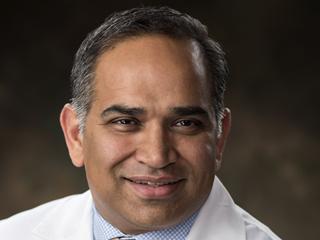Four More Years of NIH Funding to Study Regenerative Tissue Repair

Sundeep Keswani, M.D., FACS, FAAP, surgical director of Basic Science Research at Texas Children’s Hospital and professor in the Division of Pediatric Surgery at Baylor College of Medicine, has been awarded $3.1 million in a competitive renewal of his R01 study, “Novel Mechanisms of Regenerative Wound Healing” through the National Institute of General Medical Sciences. This grant will fund his valuable research in wound repair through March 2025. Dr. Keswani has been studying dermal injury for almost 20 years, a passion that has placed him as the leader of a multidisciplinary team in the Texas Children’s Laboratory for Regenerative Tissue Repair, located in the Texas Children’s Feigin Tower.
As a pediatric and fetal surgeon, Dr. Keswani found himself intrigued by the scarless wound healing he observed in fetal surgery. His research has explored the unique molecular mechanisms of these fetal regenerative responses in order to develop innovative therapies preventing both the cosmetic consequences and compromised tissue integrity that usually accompanies wound healing. Over the last five years of funding, his research team has identified previously unreported mechanisms of regenerative wound repair, patented an innovative hydrogel technology for wound healing, and communicated their findings in more than a dozen peer-reviewed articles.
This current award will continue Dr. Keswani’s productive collaboration with co-investigators Swathi Balaji, Ph.D., of Baylor, and Paul Bollyky, M.D., Ph.D., of Stanford University. Going forward, the proposed studies will allow Dr. Keswani’s team to elucidate the role of lymphocytes in regulating fibrosis. Dr. Keswani expects that this research will extend beyond his young patients at Texas Children’s to impact our understanding and treatment of adult wound repair, including impaired wound healing states such as diabetes, burns, pulmonary fibrosis and abdominal adhesions.










